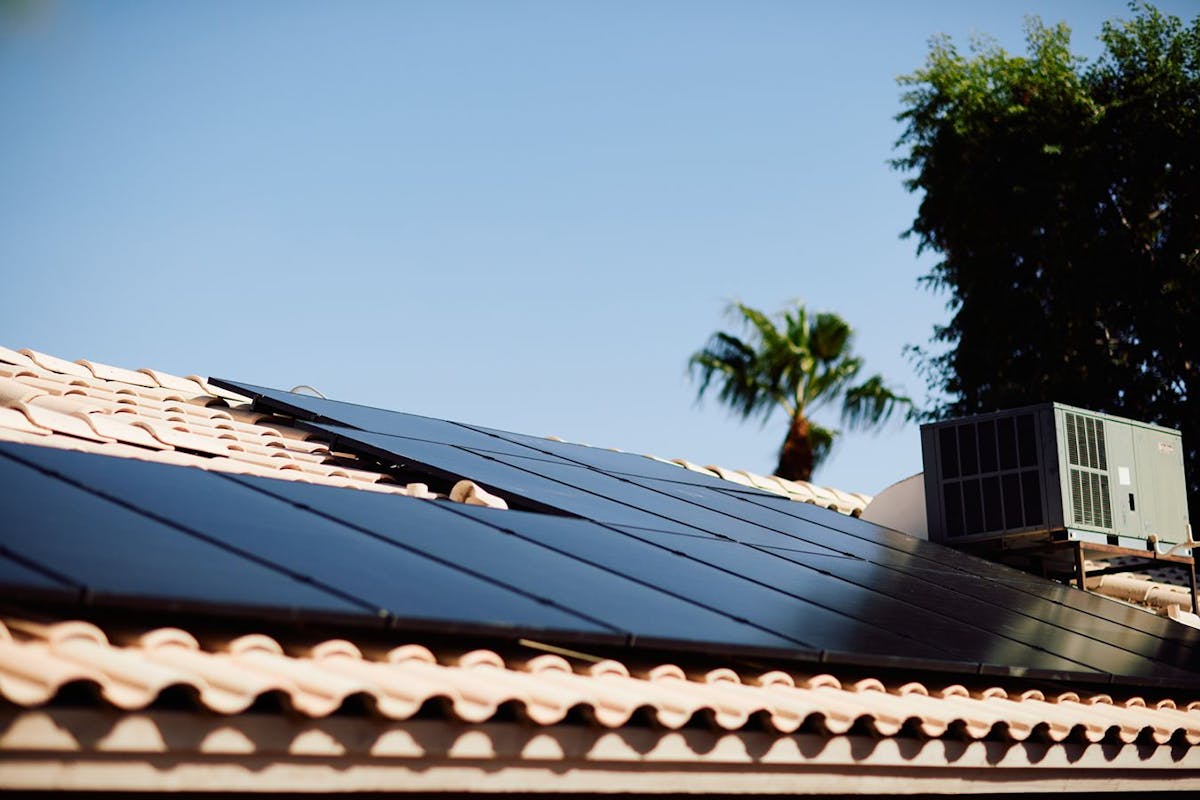Net Billing and Avoided Cost Rates for Home Solar
Last edited

Author
Andrew Giermak
Solar and Electrification Writer and Editor

Editor
Andrew Blok
Electrification and Solar Writer and Editor

When you have home solar panels and your system is sending excess solar electricity back to the utility company grid, how is that energy valued? If you have a net billing plan (a close relative of net metering), understanding the avoided cost rate from the utility may help you understand your bills.
Saving money now and for years to come is an important reason for going solar. Net billing or net metering with your local utility is important to the overall value of your investment in solar power.
See how much you can save by going solar with Palmetto
What Are Avoided Cost Rates for Solar?
An avoided cost is equal to the cost an electric utility pays to generate or purchase power. In other words, an avoided cost is the expense a utility or electricity provider can avoid by not having to generate new power or purchase it from a third party.
Established by the Public Utility Regulatory Policies Act of 1978 (PURPA), avoided costs represent the minimum financial amount an electric utility is required to pay an independent power producer, such as a home with grid-tied solar panels.
For example, let’s say you generate solar power on your property and “sell” it to the utility at an avoided cost rate. In this scenario, your solar power is purchased at a rate equal to the utility’s approximate cost to generate the same amount of electricity or buy it from another source, like a neighboring power plant.
When are avoided costs paid in net metering?
Although net metering policies for home solar differ from state to state and utility to utility, avoided cost rates typically come into play for net metering customers at the end of their solar billing cycle. Whereas most net metering programs allow excess bill credits to roll over from month to month, after 12 months, credit surpluses are typically cashed in at avoided cost rates. This is commonly referred to as the “true-up statement.”
For example, let’s say your solar panels are interconnected in a true 1-to-1 net metering agreement, and you are paid retail energy prices for the electricity you share with the grid. If, after one year of operation, your solar system has produced 12,000 kWh of electricity while your property has only consumed 11,500 kWh, the remaining 500 kWh surplus of excess energy would likely be redeemed at avoided cost rates on your next utility bill.
Avoided costs in net billing vs. net metering
California’s Net Billing Tariff (commonly referred to as “NEM 3.0”) shifted from traditional net energy metering to a new “net billing” structure. Under NEM 3.0 in California, the value of electricity sent to the grid from new solar energy systems is based on avoided cost rates for PG&E, SCE, and SDG&E utility customers.
NEM 3.0 significantly lowered the value of solar exports for homeowners in California compared to previous California Public Utilities Commission (CPUC) policies. Though Californians can still save with solar, especially with attached batteries.
Here’s a very general example of the possible difference in bill credits with a net metering plan’s export rate compared to a net billing plan’s export rate.
| Net metering | Net billing | |
|---|---|---|
| Consumed | 350 kWh | 350 kWh |
| Exported | 400 kWh | 400 kWh |
| Electricity rate | $0.15 | $0.15 |
| Export rate | $0.15 | $0.05 |
| Balance | 50 kWh | 50 kWh |
| Credit | $7.50 | $2.50 |
How Much Are Solar Avoided Cost Rates?
Avoided cost rates change constantly and vary depending on where you live. There is no federal solar avoided cost rate. Local utility controlling bodies must calculate and report their own avoided costs. Avoided cost rates are significantly lower than the retail energy rates found in traditional net metering structures.
Avoided cost rate range
In general, avoided cost rates for solar exports are very low. In California, where electricity prices are some of the highest in the nation, avoided cost rates are about 3-4 cents/kWh for the three largest utility companies (PG&E, SCE, and SDG&E) in 2025. In Connecticut, avoided cost rates range from about 4-6 cents/kWh. In Florida, the avoided cost rates are 2-4 cents/kWh.
See how much you can save by going solar with Palmetto
Factors to avoided cost rates
Considering the latest CPUC avoided cost calculator resource is over 100 pages long, it’s safe to say many factors affect avoided cost rate calculations. The most important factors that affect the value of avoided cost rates for solar customers are:
- Time of day: In a time-of-use (TOU) energy rate structure, solar may be more valuable if exported when local energy demand is highest. For most TOU schedules, avoided cost rates for solar exports are highest on weekdays in the afternoon and early evening – especially during summer months.
- Fuel prices: Avoided cost rate values weigh heavily on current fuel prices for electricity generation. Across the US, local average fuel prices may vary greatly depending on the current market rates and availability of fossil fuels and renewable energy resources.
- Operational costs: In addition to the cost of the electricity itself, operational costs for electric grid infrastructure, transmission losses, energy procurement, and other utility overhead can also influence avoided cost rates.
While avoided costs are calculated differently across the country, most utilities elect to create a predetermined schedule that values avoided costs based on the exact time of day, week, and year energy is shared with the grid. In some areas, homeowners may be eligible for programs like California’s ACC Plus Adders, which compensates solar exports at a few extra cents/kWh beyond the standard avoided cost rates.
With less incentive to send electricity to the utility grid, solar panel system owners can incorporate a battery to increase their energy independence and maximize their solar savings in areas where solar exports are paid at avoided cost rates.
Recap and Looking Forward
In summary, the fundamental principles of avoided cost rates for home solar power systems are:
- Avoided cost rates are the minimum price a utility must pay for the solar energy shared to the power grid from a permitted and interconnected system.
- Avoided cost rates are based on the expenses an energy provider would have incurred if electricity were generated or purchased from another source.
- Usually only a few cents per kilowatt-hour (kWh), avoided cost rates are significantly lower than average retail rates for utility electricity.
- If you live in an area that pays avoided cost rates for solar electricity, a battery storage system can help you obtain more control over your solar power savings.
To learn more about avoided cost rates and home solar power, get a free solar savings estimate today.
See what solar can do for you:
Frequently Asked Questions
What happens if my solar system generates more power than I need?
If your home is connected to the grid, as most home solar systems are, and you’re in a net metering or net billing area, excess energy can go into the grid, and earn credit on your electricity bill. If you choose to have battery storage with your solar system, excess energy can be stored in your battery, as well.
Will I have an electric bill with net metering?
You’ll still receive an electric bill when you go solar. Even if you have months using no power from the utility company, you will get a bill and may owe certain fees or service charges.
What is a solar payback period?
A solar payback period is the amount of time it takes for the savings from solar to offset the cost of buying and installing a system. Once you’ve reached the end of your payback period, you’ve paid off your initial investment, and should see larger savings throughout the remaining years of your system.


